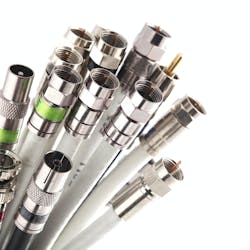With a lot of talk in cable centering on moving various capabilities closer to the node or even the home, Gerard White, chief architect of network infrastructure at Motorola Mobility (NYSE:MMI), asks if headends could be simplified instead by pushing some of the technology back into the network at a regional location -- akin to a data center in the IT world.The trend away from broadcast video toward a narrowcast world means that an increasing number of applications are server-based. The question becomes what makes sense with regard to the infrastructure in a more IP-centric scenario."Which pieces (of the network) could be moved?" White asked. "How do we get there, given where we are today ...? Which functions could move back into the network, and which (should go) further into the node? Do I break apart some of the traditional components like CMTS and QAM?"A well-known problem facing cable operators from an HFC perspective is lack of power and real estate. The CCAP initiative is in motion with the idea of resolving these issues, in part, by concentrating digital and RF processing power in a single platform."One of the things we learned as we did that was it was a hard thing to do," White said. "Platforms will start to appear in the next year or so that have achieved it, but they are quite big. As the technology evolves, it may be possible to change some of the functionality and move some of it out of the CCAP platform."In other words, perhaps there would be a staged transition that would migrate from a CCAP network. The dense systems could be broken into pieces with the RF processing separated out and some of the functionality pushed back into the network.The functions moved closer to the node would serve to increase broadband capacity, White explained. The processing capacity, however, would not be centered in the hub. "It is a different way to partition functions so that you can add smaller pieces of processing equipment into the hubs," White said. "It (could be) part of a plan so that simplified node splitting and bandwidth addition can happen."In what he calls a "speculative" paper, White presented these and other ideas at the Cable Show in Boston. "The transition would take a long time to evolve," he said. "This sets out a plausible approach you might take."Monta Monaco Hernon is a free-lance writer. She can be reached at [email protected].






